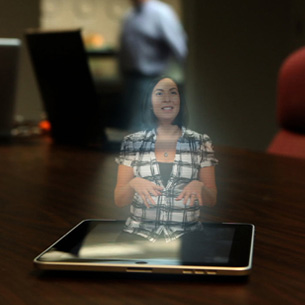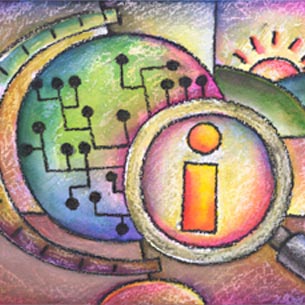
Data analysis of 3D objects in virtual space
Sometime in the next five years enterprise workers will access information in novel three-dimensional ways such as modeling a product in virtual space before building it, or deriving analytics by walking around a projected 3D image of a bar chart.
“Advances in 3D technology have consumer value in TV, but gives enterprises the opportunity to start looking at enterprise data in three dimensions too,” said Don Campbell, chief technology officer for business analytics with IBM Canada Ltd. If you can walk around that data you can really see it in all dimensions it’s trying to project,” said Campbell.

Air-guzzling batteries for your smart device
While battery technology has so far undergone steady growth, it has been minor. Campbell said batteries will have to advance much more in order to power the heavy processing that enterprise workers must do on their mobile devices. IBM foresees the coming of batteries that will feed off the atmosphere around us.
“If we can take advantage of the chemistry of our atmosphere and have those batteries last longer… to be able to have the device continue to be effective for me then it can play a bigger role in my day,” said Campbell.

Data centre heat will brew your morning coffee
IBM’s predicts the next five years will bear witness to significantly more efficient data centres. Currently, a whopping 50 per cent of energy in data centres is allocated to cooling heavy-duty processors but that is about to change, said Campbell.
Enterprises will use water to transfer heat from processors and reuse it for other business needs such as warming office buildings and brewing coffee.

You too can be a Citizen Scientist
Citizen scientists will emerge in the next five years. Everyday people, including enterprise workers, will utilize existing technology such as smart phones, laptops and social media to feed valuable data to research.
“At a creek bed they can answer simple questions to water departments and give them a massive amount of very local content that they would never be able to get themselves,” said Campbell.
It’s not such an outlandish thought given enterprise workers are already using technology to share information, collaborate and work remotely, said Campbell. It’s merely a matter of using the same technology more intelligently and productively to derive added value to help the planet.
“It’s not a matter of now re-arming people with a brand new set of technology, it’s about being smarter with the technology that we already possess,” said Campbell.

IT will personalize your commute to work
Your commute to the office will be pre-planned just for you. IBM foresees the next five years will be when systems start combining myriad bits of information already out there to help people better schedule their route to work. Information such as GPS, traffic data and parking garage vacancies will be integrated for greater value, said Campbell.
“Before I start my commute the information can tell me, ‘You’re best to travel on this route today to work and you’re best to park in this garage over here rather than the one closest to your building because by the time you get there it’s likely going to be filled already,'” said Campbell.
View the next slideshow: Teardown: Facebook CEO Mark Zuckerberg Tech geeks love Facebook.
❮ ❯